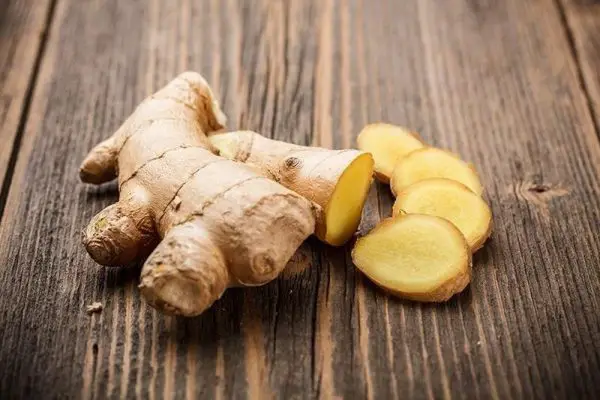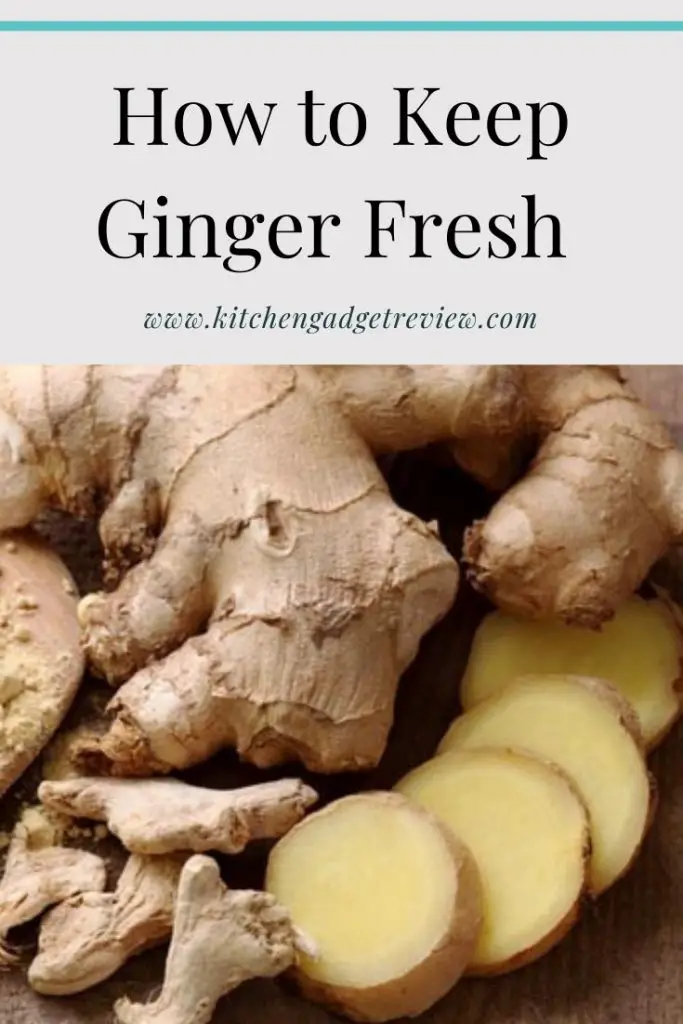Ginger is a great ingredient you can use to spice up any dish you have in mind. Aside from dishes, this spice also has medicinal properties that can help reduce nausea, provide relief from the common cold, or even help in digesting food. Moreover, it can even be used in sweets and cocktails. While ginger has many uses, you may not be able to use the whole root at once.
Due to this, you should know how to store ginger properly so it is readily available in the kitchen each time you need it. If you have no idea how to store ginger properly, fret not since we got you covered. Check out the following list on how you can store ginger properly.

How to Keep Ginger Fresh
Let’s get into all the details you need to know about how to keep ginger fresh, and of course some common questions like, “Does freezing ginger lose nutrients” and, “Do you refrigerate ginger root?”
How to Store Ginger
Let’s get into all the details about how to keep ginger fresh for as long as possible.
#1: Storing in the refrigerator
A common question that people have is, “Do you refrigerate ginger?” Here’s the answer:
The refrigerator is probably the best place where you can store ginger. Even as it’s best to store ginger intact or unpeeled, you can also store cut ginger in the fridge. But it may not last as long as unpeeled ginger.
You can wrap the ginger with a paper towel ensuring that all parts of the ginger are covered. Then put it in a brown paper bag before putting it in the crisper section of the fridge. You can also use a Ziploc bag, but make sure you push the air out of the bag before putting it in the fridge.
#2: Storing Ginger Root in the freezer
If the fridge is full and there is no space for the ginger, you can also store it in the freezer. Storing ginger in the freezer allows it to last for a few months. When you need it, you only have to take out the ginger and grate out what you need. You don’t have to allow it to thaw before grating it.
Before putting the ginger in the freezer, cover it with plastic wrap. After this, put it inside a freezer bag or a freezer-safe container to protect it from freezer burn. If you are using a freezer bag, make sure to squeeze out any extra air before putting it the ginger in the freezer.
You may want to know whether freezing ginger causes it to lose nutrients. The good news is that freezing ginger doesn’t cause it to lose nutrients. Because foods lose nutrients and nutritional value naturally over time, freezing them is actually a good way to stop this process.
#3: Using a vacuum-sealed jar
Storing ginger in a vacuum-sealed jar allows you to keep it for a couple of weeks. There are several brands of jars with a vacuum seal feature available in the market. You can use any of these to store ginger.
But before you put the ginger in the jar, wrap it with plastic wrap. After putting the wrapped ginger in the jar, seal it. You can put the jar in the fridge with the appropriate label.
Or, here’s one of the top options:
- For use with mason-type jars
- Great for sauces, mustards, and jams
- Odor proof and stain resistant
- Dishwasher safe
- BPA Free, environmentally safe
#4: Using a vacuum seal bag for fresh ginger
If you cannot find a vacuum-sealed jar, you can use a vacuum seal bag. This method has a longer storage period than using the jar. So, you may want to consider using this method rather than the vacuum-sealed jar.
Put the ginger in the vacuum seal bag before vacuum sealing it. Then label it and put it in the freezer. If you’re looking for a vacuum sealer, check out some of our top picks here:
#5: Store it in alcohol
Peeled ginger may not last long even if you store it in a Ziploc bag. Storing it in the freezer may not make it easy for you to slice and dice ginger. But there is one method you can use to go around these limitations, storing ginger in alcohol (vodka, dry sherry, or sake).
The first thing to do is to peel the ginger and remove any blemishes on the root. Then put it in a jar and completely submerge it in alcohol before putting it in the fridge. You can simply take out part of the root you want to use and return the unused portion in the jar.
#6: Planting it
This method may sound strange, but it actually gives you an endless supply of ginger. All you need is a small pot and plenty of sunshine for the plant. Similar to other houseplants, it will have leaves and will grow if you take care of it properly.
Just put the ginger root in a small pot and place it on a windowsill. Whenever your recipe calls for some ginger, just lift the plant up and cut a root. Then put it back in the pot. Just make sure to give it enough water and sunshine so you will have all the ginger you need.

How do I store fresh ginger?
#7: Dry it out
Dried ginger can last up to six months if you store it in an airtight container. You can put the container in a cool, dry place. You can use an oven, a dehydrator, or even the sun to dry ginger.
The first thing you should do is to clean the ginger and remove any dirt it may have. Then peel off the skin before cutting it into thin slices. The drying process may last between a couple of hours and one week depending on the drying method you are using.
Check out one of our top picks for food dehydrators:
- Designed in California. Comes with 6 Stainless Steel Trays, 1 Mesh Screen, 1 Fruit Roll Sheet, 1...
- STAINLESS STEEL - Made with food-grade stainless steel and glass front door. this dehydrator is...
- EASY TO USE - Use the digital control panel to set the timer in 30-minute increments for up to 48...
- QUIET TO USE - Simply press the start button to dehydrate your food and go to sleep. The noise is...
- SAFE TO USE - Tray liners are 100% BPA-FREE. Auto shut off kicks in right when the timer ends....
What to Do With Excess Ginger Root Besides Storing It
While you may want to save unused ginger for future use, you also have the option of making something out of it. If you have no idea what else you can use ginger for aside from adding flavor to your dishes, then read on and find out.
Use it in your Tea
Drinking tea at the end of the day can be quite relaxing for anyone who has to deal with the stress of daily life. While your usual cup of tea may be enough to drive stress away, you may want to spice it up by adding a few slices of ginger to it.
Adding thin slices of ginger into your tea can help in digestion since it is known for its healing and soothing properties. It may work best when you’re having a fruity-flavored tea. But you may even do away with the tea bag and make yourself some ginger tea.
Add it into a Smoothie
Ginger has an anti-inflammatory property that makes it great to add to your smoothie. It works best when it is added to fruit-flavored smoothies. Since fresh ginger can have a strong flavor, you may want to start small and add more once you start getting used to its taste.
All you need to do is to cut a piece of ginger and put it in the blender with the other ingredients. You can find a multitude of smoothie recipes you can use with any excess ginger you have in the kitchen.
Do you like smoothies? Have a look at our top-rated smoothie blender:
- Variable Speed Control: Ten variable speeds allow you to refine every texture with culinary...
- Pulse Feature: Layer coarse chops over smooth purées for heartier recipes, such as chunky salsas or...
- The 48-ounce container is ideal for blending medium batches for small family meals. Cutting blades...
- Hardened Stainless-Steel Blades: Our aircraft-grade stainless steel blades are designed to handle...
- Self-Cleaning: With a drop of dish soap and warm water, your Vitamix machine can clean itself in 30...
Make some Pickled Ginger
Sushi lovers may like this idea since pickled ginger goes great with sushi. It’s easy to make and gives your sushi a distinctive flavor that is pleasing to the palate. All you need is the excess fresh ginger, salt, granulated sugar, and rice vinegar to make pickled ginger. Check this out: Best Sushi Making Kits.
Summary on How to Store Ginger
Ginger may be quite useful in giving dishes a distinctive flavor, more often than not you will not be able to use the whole root for your recipes. In this regard, you should know how to store ginger properly so you don’t have to take another trip to the grocery when you need it for another dish in the future.
Ginger Storage FAQs
There are a number of common questions that people have about how to keep ginger fresh. Here are the answers to some of the most popular ones.
Can Ginger be Stored at Room Temperature?
Once you peel or slice ginger, it should not be stored at room temperature. Instead, keep it in the fridge or freezer. However, unpeeled and unsliced ginger can easily be kept at room temperature, although many store it in the fridge instead.
Can you Freeze Fresh Ginger?
It’s possible to freeze fresh ginger after you peel and then mince or grate it. Put it in a flat layer in a Ziplock storage bag so that it doesn’t stick together. To use, throw some ginger root directly into food or smoothies. It doesn’t have to thaw first.
Does Freezing Ginger Lose Nutrients?
Although freezing ginger may cause it to lose some flavor, it does preserve the nutrients and nutritional value. The main way to lose nutrients before freezing is by blanching, which is not done with ginger.

Storing ginger root
Do you Refrigerate Ginger?
It’s possible to store, whole unpeeled ginger in the fridge. Put it in a resealable plastic bag with the air pushed out in the veggie drawer. If it’s been cut or peeled, blot that part dry with a paper towel.
Should You Peel Ginger?
Young ginger has thin skin that doesn’t need to be peeled. However, older ginger has tough skin and won’t be that nice when eating it in dishes. Peel it with a small paring knife before use.
Is it Okay to Eat Raw Ginger?
It’s certainly okay to eat raw ginger. Many people do it in smoothies every single day with no harm to their health.
Do you Have to Peel Ginger Before Making Tea?
It’s not strictly necessary to peel ginger before making tea, but many people do. This is because if you leave the skin on, there may be papery bits of skin floating around in your drink.

How do I store ginger root?
Have your Say about How to Store Ginger
Have any other ideas on how you can store ginger? Tell us about it below. We’d love to hear from you.
Also be sure to give this article a share on Facebook, Pinterest, or Twitter. It’ll help other ginger enthusiasts, like yourself find this useful resource.
Last update on 2021-04-09 / Affiliate links / Images from Amazon Product Advertising API



